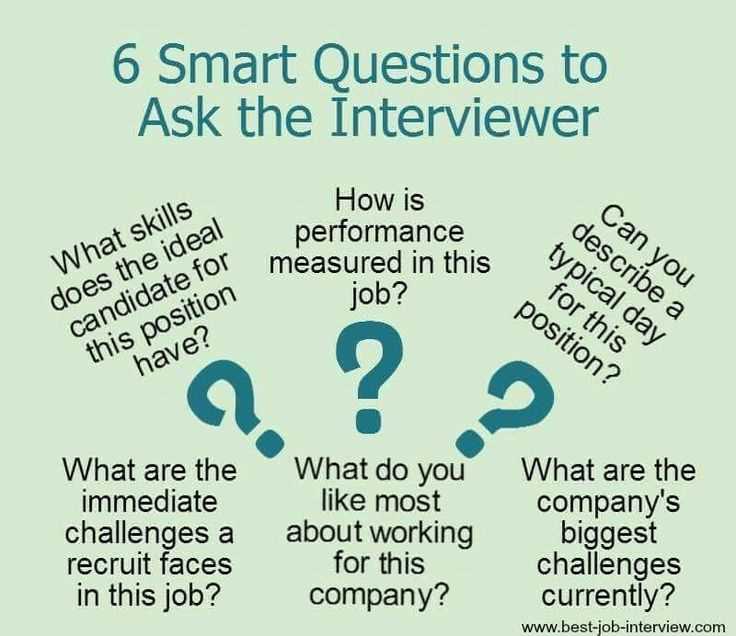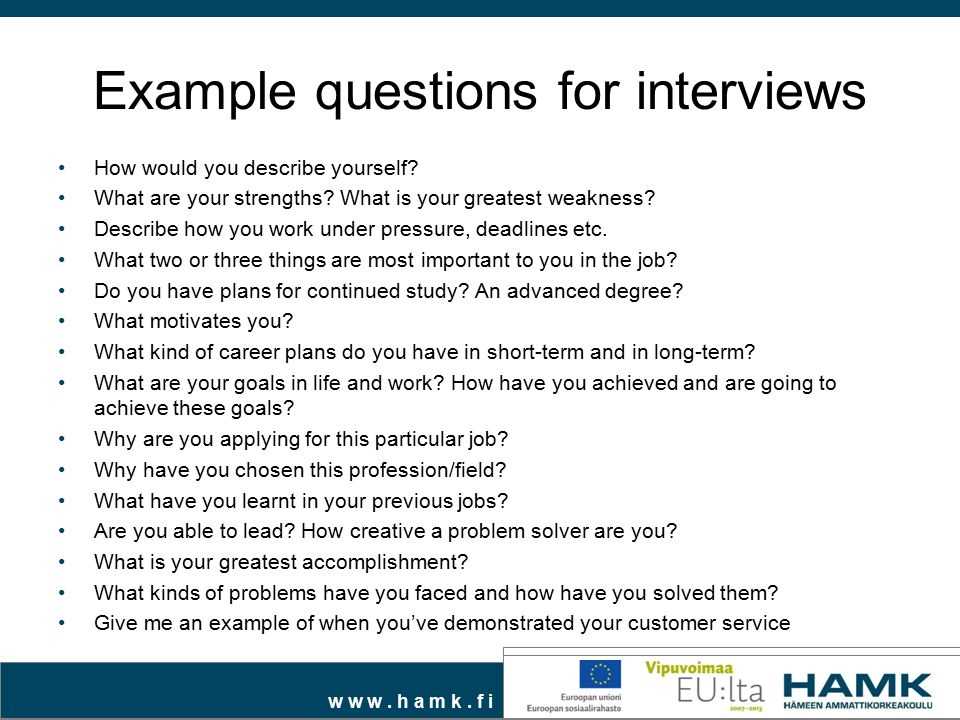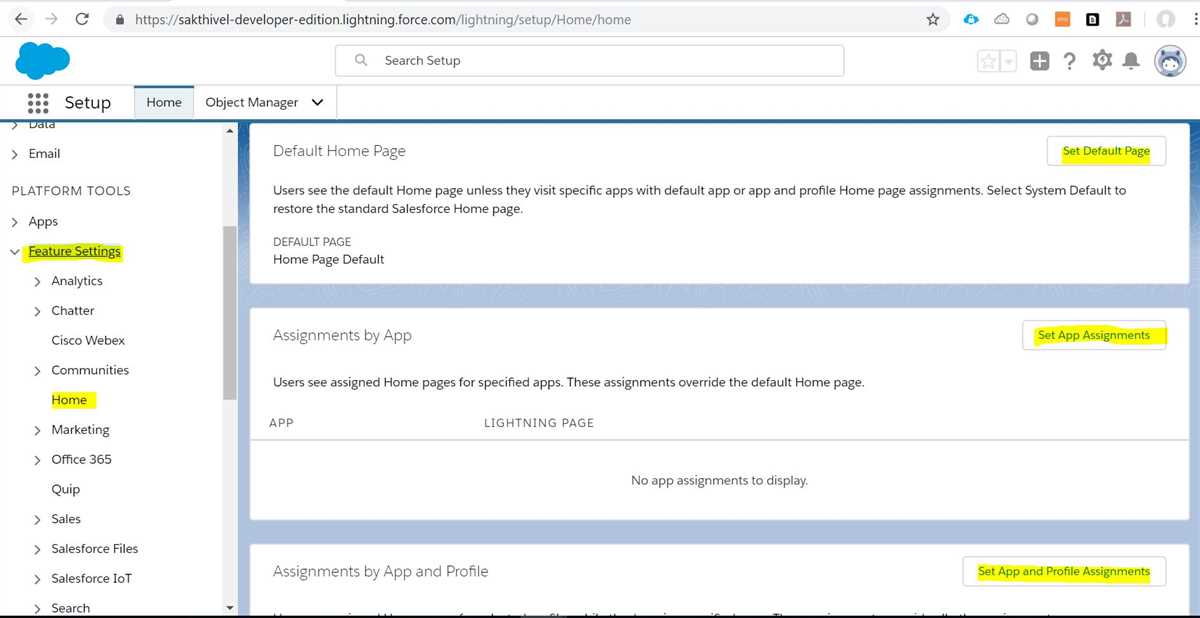
If you’re an experienced Salesforce developer looking to enhance your skills and land a job, it’s important to be prepared for the interview process. Salesforce Lightning Web Components (LWC) have become increasingly popular in recent years, so having a solid understanding of LWC and being able to answer related interview questions is crucial.
In this article, we’ll cover some commonly asked Salesforce LWC interview questions for experienced developers, as well as provide detailed answers to help you prepare. These questions will touch on various aspects of LWC, including its features, architecture, and best practices.
By familiarizing yourself with these interview questions, you’ll be better equipped to showcase your expertise in Salesforce LWC and increase your chances of success in the job market. So, let’s dive in and explore the world of Salesforce Lightning Web Components!
Salesforce LWC Interview Questions and Answers for Experienced
In the field of Salesforce development, Lightning Web Components (LWC) have become increasingly popular thanks to their improved performance and reusability. For experienced individuals looking to showcase their expertise in LWC, here are some commonly asked interview questions and their answers:
1. What is a Lightning Web Component?
A Lightning Web Component is a framework for building responsive web applications on the Salesforce platform. It uses web standards like HTML, CSS, and JavaScript to create user interfaces that are lightweight and efficient. LWCs are declarative and can be easily integrated into existing Salesforce applications.
2. What are the key features of Lightning Web Components?

– Reusability: LWCs can be easily reused across different parts of a Salesforce application, reducing duplication of code and promoting modular development.
– Performance: LWCs are optimized for performance, allowing for faster load times and improved user experience.
– Event-driven architecture: LWCs use events to communicate and interact with other components, enabling a loosely coupled and scalable application design.
– Server-side interaction: LWCs can make server-side calls to fetch data from Salesforce or external systems, making them versatile and capable of handling complex business logic.
3. How is data passed between components in LWC?
Data can be passed between components in LWC through properties. Properties are defined in the component’s JavaScript file and can be of different types (such as string, number, or Boolean). Parent components can pass data to child components by setting the values of these properties, and child components can send data back to their parent components using events.
4. What is the role of the Lightning Data Service in LWC?
The Lightning Data Service is a framework provided by Salesforce that helps in retrieving, creating, updating, and deleting records without requiring Apex code. It provides a declarative way to interact with Salesforce data and handles important considerations like sharing rules and field-level security. In LWC, the Lightning Data Service is used to fetch and manipulate data from the Salesforce database in a secure and efficient manner.
5. How can you handle errors in LWC?
In LWC, errors can be handled using try-catch blocks in JavaScript. By wrapping a code block in a try statement, any errors that occur within that block can be caught and handled in the corresponding catch block. Additionally, LWC provides built-in error handling capabilities through the `lightning:messages` component, which can display error messages to the user.
These are just a few examples of the type of questions you may encounter in a Salesforce LWC interview. It’s important to have a strong understanding of LWC concepts, along with practical experience working with the framework, to confidently answer these questions and impress potential employers.
What is Salesforce LWC and why is it important for experienced professionals?
Salesforce Lightning Web Components (LWC) is a modern UI framework developed by Salesforce that allows developers to build web applications with rich user interfaces. LWC is built on web standards, making it compatible with all modern web browsers and easily portable to other platforms. It provides a component-based architecture and leverages the power of Salesforce’s Lightning Platform, enabling developers to create highly interactive and responsive applications.
For experienced professionals in the Salesforce ecosystem, LWC is important as it offers several advantages over its predecessor, Aura components. LWC improves performance with its lightweight architecture, enhancing the user experience by reducing page load times and improving responsiveness. LWC also provides better security by preventing cross-site scripting attacks and enforcing strict data access controls.
Additionally, LWC allows for easier code reuse and modularity. Its design promotes the creation of reusable components that can be easily shared across different applications, reducing development time and effort. LWC also provides better tooling and developer productivity enhancements, such as improved debugging capabilities and faster compilation times.
Overall, Salesforce LWC is crucial for experienced professionals as it enables them to develop more efficient and robust applications, improve user experience, and streamline development processes. Embracing LWC empowers experienced professionals to stay ahead of the curve in the rapidly evolving Salesforce ecosystem and deliver high-quality solutions to their clients.
Common interview questions for experienced Salesforce LWC developers
When interviewing for a position as an experienced Salesforce LWC (Lightning Web Components) developer, it is important to be prepared to answer a variety of technical questions. Here are some common interview questions that you may come across:
1. What is Salesforce LWC?
Lightning Web Components (LWC) is a programming model from Salesforce that is used to build responsive and efficient web applications on the Salesforce platform. It provides a component-based architecture and a set of reusable UI components that can be used to create modern and user-friendly interfaces.
2. What are the key features of LWC?
- Lightweight and fast: LWC leverages modern web standards to provide a highly performant and responsive user experience.
- Reusability: LWC components are designed to be reusable and can be easily added to different parts of an application.
- Event-driven architecture: LWC uses a publish-subscribe model to communicate between components.
- Easy integration: LWC can be seamlessly integrated with other Salesforce technologies, such as Apex and Aura components.
3. What is the difference between LWC and Aura components?
LWC and Aura components are both component-based frameworks from Salesforce, but there are some key differences between them. LWC is built on modern web standards and provides better performance and reusability compared to Aura components. LWC also has a simpler programming model and can be more easily integrated with other web technologies. On the other hand, Aura components have been around longer and have a larger existing codebase, but Salesforce is actively pushing developers towards adopting LWC for new development.
4. How do you handle data binding in LWC?
In LWC, data binding is a way to establish a connection between the component’s JavaScript code and its HTML template. LWC provides two types of data binding: property binding and event binding. Property binding allows you to pass data from the JavaScript code to the HTML template, while event binding allows you to listen for and handle events in the JavaScript code.
5. Can you explain the lifecycle hooks in LWC?
In LWC, lifecycle hooks are methods that are called at different stages of the component’s lifecycle. Some of the commonly used lifecycle hooks are:
- constructor: Called when the component is created.
- connectedCallback: Called when the component is inserted into the DOM.
- renderedCallback: Called after the component’s template has been rendered.
- disconnectedCallback: Called when the component is removed from the DOM.
6. How do you handle server-side calls in LWC?
In LWC, server-side calls can be made using the @wire decorator. The @wire decorator allows you to declaratively wire the component’s JavaScript properties to a server-side method. This enables you to fetch data from the server and update the component’s state automatically.
Advanced Interview Questions for Experienced Salesforce LWC Developers

In an interview for an experienced Salesforce Lightning Web Component (LWC) developer position, you can expect a range of advanced questions that will test your in-depth knowledge of LWC development, Salesforce platform, and best practices. Here are some common advanced interview questions for experienced LWC developers:
1. How do you handle large data sets and improve performance in LWC?
- Explain the use of pagination and lazy loading techniques to load data incrementally.
- Showcase your understanding of caching mechanisms like `@wire` and client-side caching to minimize multiple server calls and improve performance.
2. How do you integrate with external systems and APIs in LWC?
- Explain the use of Apex methods and `@wire` adapters to call external APIs.
- Showcase your knowledge of authentication methods like OAuth and JWT to securely connect with external systems.
3. How do you handle error handling and exception management in LWC?
- Demonstrate the use of try-catch blocks and error handling techniques in LWC to handle exceptions gracefully.
- Showcase your understanding of error logging and troubleshooting methods to identify and fix issues efficiently.
4. How do you optimize LWC code for performance and maintainability?
- Explain techniques like code splitting and lazy loading to optimize initial load time.
- Showcase your knowledge of design patterns and best practices to write clean and maintainable code.
5. How do you architect complex LWC components and handle component communication?
- Demonstrate your understanding of component architecture concepts like parent-child components, component events, and state management.
- Showcase your experience with complex component hierarchies, communication patterns, and performance optimization techniques.
6. How do you write unit tests for LWC components?
- Explain the use of Jest framework and the `@salesforce/sfdx-lwc-jest` library for writing unit tests.
- Showcase your knowledge of mocking and stubbing techniques to isolate dependencies.
7. How do you handle internationalization and localization in LWC?
- Showcase your understanding of Salesforce translation workbench and custom translation solutions for multi-language support in LWC.
- Demonstrate your experience with handling date formats, number formats, and currency conversions in different locales.
8. How do you integrate LWC with other Salesforce features and technologies?
- Explain the use of LWC with Lightning Aura Components, Visualforce pages, and Lightning Experience.
- Showcase your understanding of integrating LWC with Salesforce technologies like Apex, SOQL, and custom metadata.
These advanced interview questions will help assess your expertise in Salesforce LWC development and determine if you are a suitable candidate for an experienced LWC developer role.
Best practices and tips for writing efficient Salesforce LWC code
When developing Salesforce Lightning Web Components (LWC), it is essential to follow best practices to ensure efficient code that performs well and is easily maintainable. Here are some tips to help you write efficient Salesforce LWC code:
1. Limit the use of wire adapters
Although wire adapters are a powerful feature in LWC, they can have an impact on performance if used excessively. It is recommended to use them only when needed and to fetch only the necessary data. Using wire adapters for large data queries or frequent updates can lead to longer loading times and increased resource consumption.
2. Avoid unnecessary re-renders
In LWC, the framework handles reactivity and updates the DOM efficiently. However, excessive re-renders can impact performance. To avoid unnecessary re-renders, use the @track decorator only when necessary and update properties and DOM elements programmatically only when required.
3. Optimize DOM manipulation
Efficient DOM manipulation is crucial for good performance. Avoid unnecessary DOM manipulations by using conditional rendering and dynamic styling rather than adding or removing elements. Additionally, use document fragments or the LWC render lifecycle hooks (connectedCallback, renderedCallback) to optimize DOM creation and modification.
4. Minimize data transfers
To optimize performance, minimize the amount of data transferred between the server and the client. Use server-side caching, pagination, and lazy loading techniques to fetch and display data incrementally. Additionally, consider using client-side caching with Local Storage or Session Storage for frequently accessed data.
5. Properly design component architecture

A well-designed component architecture can greatly improve performance and maintenance. Use component composition to break down complex functionality into smaller reusable components. Follow a modular approach, keeping components focused and lightweight. This allows for better code organization, easier debugging, and improved performance.
- Use events and event handlers sparingly.
- Use appropriate access modifiers for your component properties and methods.
- Perform efficient error handling and logging.
- Follow naming conventions and use descriptive names for variables and functions.
- Ensure your code is properly tested and optimized for performance.
By following these best practices and tips, you can write efficient Salesforce LWC code that delivers optimal performance and enhances your application’s usability and maintainability.
How to showcase your expertise in Salesforce LWC during an interview
When interviewing for a Salesforce LWC (Lightning Web Components) position, it is crucial to effectively showcase your expertise and knowledge in order to stand out from other candidates. Here are some strategies to help you demonstrate your skills and experience with Salesforce LWC during an interview.
1. Highlight relevant projects: Start by discussing your previous projects and highlight those in which you worked extensively with Salesforce LWC. Provide specific examples of how you utilized LWC to solve complex problems or enhance the functionality of a Salesforce application. This will demonstrate your hands-on experience with LWC and showcase your ability to apply it effectively in real-world scenarios.
2. Discuss your knowledge of Salesforce architecture: Employers are often interested in candidates who have a deep understanding of the Salesforce platform as a whole. Make sure to discuss your knowledge of the Salesforce architecture and how LWC fits into the larger ecosystem. Highlight your understanding of concepts such as Aura components, Apex controllers, and event-driven programming. This will showcase your ability to collaborate with other team members and integrate LWC into existing Salesforce applications.
3. Showcase your coding abilities: Salesforce LWC is heavily based on JavaScript and web development principles. During the interview, be prepared to discuss your proficiency in JavaScript, HTML, CSS, and other related technologies. Provide examples of how you have used these languages to build dynamic and interactive user interfaces within Salesforce using LWC. You can also showcase your understanding of modern web development practices, such as component-based architecture and responsive design.
4. Demonstrate your problem-solving skills: Salesforce LWC developers are often tasked with resolving complex issues and optimizing performance. Be prepared to discuss how you approach problem-solving and provide examples of how you have debugged and resolved issues in the past. This will showcase your ability to analyze code, identify root causes, and implement effective solutions using LWC.
- 5. Be familiar with the latest Salesforce LWC features: Lastly, make sure you stay up to date with the latest updates and features introduced in Salesforce LWC. Research and familiarize yourself with new functionality such as wire services, communication channels, and event propagation. Being knowledgeable about the latest advancements will demonstrate your enthusiasm for learning and adapting to new technologies.
By following these strategies, you can effectively showcase your expertise in Salesforce LWC during an interview and position yourself as a strong candidate for the role. Remember to provide specific examples, discuss your understanding of Salesforce architecture, highlight your coding abilities, demonstrate problem-solving skills, and stay updated with the latest features. Good luck!
Final thoughts on preparing for a Salesforce LWC interview as an experienced professional

Preparing for a Salesforce Lightning Web Components (LWC) interview as an experienced professional requires a focused and comprehensive approach. Here are some key takeaways to keep in mind:
- Understand the fundamentals: Make sure you have a strong understanding of the core concepts and features of LWC, such as component structure, data binding, event handling, and lifecycle hooks. Familiarize yourself with the official Salesforce documentation and practice implementing LWC components in a real-world scenario.
- Know the best practices: Salesforce follows certain best practices for building LWC components. Make sure you are aware of these best practices and try to apply them in your code. This includes using standard Lightning Design System (SLDS) CSS classes, implementing efficient data retrieval and caching strategies, and following the recommended JavaScript coding conventions.
- Stay up to date: Salesforce regularly releases updates and new features for LWC. Stay up to date with the latest releases and enhancements by attending webinars, joining online communities, and reading blogs related to Salesforce and LWC. This will showcase your enthusiasm and dedication to keeping up with the latest industry trends.
- Practice coding: The best way to become comfortable with LWC is to practice coding. Create sample projects, work on existing Salesforce projects, and participate in coding challenges and exercises to sharpen your skills. This will not only help you in interviews but also boost your confidence when working on real-world projects.
- Prepare for technical questions: As an experienced professional, you can expect more in-depth technical questions during the interview. Be prepared to answer questions about architecture, performance optimization, security, and integration capabilities of LWC. Review common interview questions and ensure you have a good grasp of the underlying concepts.
Remember, the key to success in a Salesforce LWC interview as an experienced professional lies in a combination of theoretical knowledge and practical skills. With thorough preparation and a genuine passion for learning and growing, you can confidently showcase your expertise in LWC and secure your desired job opportunity.